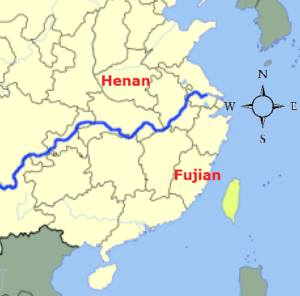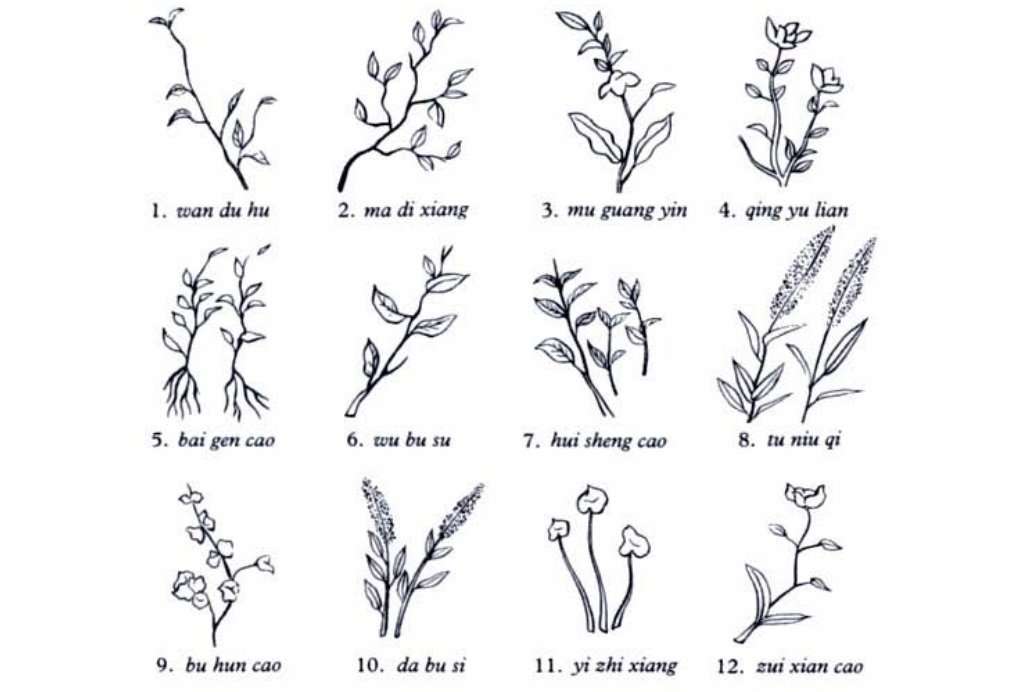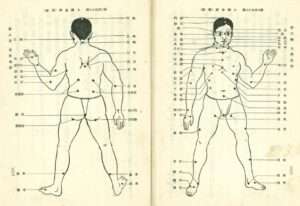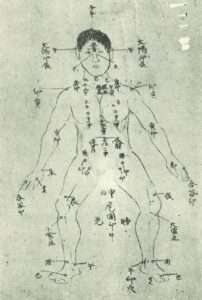Bubishi – The classic manual of combat.
The origin of the Bubishi.

The Bubishi is a classical Chinese martial arts manual that holds significant importance in the realm of Okinawan martial arts. It serves as a fundamental text that encompasses various aspects of martial arts theory, technique, and philosophy. While the exact origins of the Bubishi remain somewhat unclear, it is widely believed to have originated in China and later made its way to Okinawa.
The Bubishi’s precise origins can be traced back to the Ming dynasty in China, which spanned from the 14th to the 17th century. During this period, there was a considerable exchange between China and the Ryukyu Kingdom, which is the present-day Okinawa Prefecture in Japan. It is believed that the Bubishi was brought to Okinawa by Chinese sailors, merchants, or emissaries who traveled to the island.
Once it arrived in Okinawa, the Bubishi served as a valuable resource for martial artists who sought to deepen their understanding of combat techniques and strategy. The manual covers a wide range of topics, including strikes, kicks, throws, joint locks, pressure points, and vital targets. Additionally, it delves into principles of breathing, meditation, philosophy, and the development of a warrior’s mindset.

The Bubishi’s influence on Okinawan martial arts, particularly on styles such as Karate, cannot be overstated. It provided a comprehensive framework for training and instruction, allowing practitioners to refine their techniques and develop a deeper understanding of martial arts as a holistic discipline. Over time, the Bubishi became revered as a sacred text, passed down from generation to generation within select martial arts lineages.
While the Bubishi is primarily associated with Okinawan martial arts, it might have had an influence on other styles such as Jujutsu and other traditional Japanese martial arts.
Chinese medicine and herbal pharmacology.

The Bubishi contains valuable knowledge about Chinese medicine and herbal pharmacology. Within its pages, it provides insights into the medicinal properties of various herbs and their applications in treating injuries and enhancing physical health.
Chinese medicine has a long history of incorporating herbs and natural remedies to promote well-being and aid in the healing process. The Bubishi acts as a bridge between martial arts and traditional medicine, recognizing the importance of maintaining one’s health to achieve peak physical performance and longevity.
The Bubishi outlines a range of herbs and their therapeutic properties, focusing on those relevant to martial artists. These herbs are believed to possess qualities that can alleviate pain, reduce inflammation, enhance circulation, and promote overall healing. By incorporating these herbs into their training and recovery routines, martial artists aim to optimize their physical condition and expedite the healing process when injuries occur.
The Bubishi also highlights the importance of specific herbal formulas to strengthen the body’s overall constitution. These formulas typically include a combination of herbs known for their tonic and rejuvenating properties. They aim to enhance vitality, boost the immune system, and support the body’s natural healing processes.
In addition to herbal pharmacology, the Bubishi incorporates principles of Chinese medicine such as acupuncture and acupressure. These practices focus on stimulating specific points in the body to regulate energy flow, alleviate pain, and promote healing. The manual provides guidance on pressure points, meridians, and techniques to address various ailments and injuries that martial artists may encounter.
The inclusion of Chinese medicine and herbal pharmacology in the Bubishi demonstrates the holistic approach to martial arts training and the recognition of the interconnectedness between physical health, martial skill, and overall well-being. By understanding the principles and applications of these herbs and medicinal practices, practitioners can take a comprehensive approach to their training, recovery, and injury management, thereby optimizing their martial arts practice and overall health.
The “36 vital points”
The “36 vital points” or “36 chambers.” These vital points are believed to be key targets on the human body that, when struck or manipulated, can cause significant pain, disable an opponent, or even lead to incapacitation or death.


The specific details and techniques related to the 36 vital points can vary between different interpretations and lineages of martial arts. The Bubishi provides a framework for understanding these points and their applications, but it may not offer a comprehensive and detailed explanation of each individual point.
The concept of vital points in martial arts draws from traditional Chinese medicine and the understanding of the body’s meridian system and acupuncture points. It is believed that these vital points correspond to specific areas where the flow of energy (known as “qi” or “ki”) in the body is concentrated or vulnerable.
The 36 vital points encompass various regions of the body, including the head, neck, torso, limbs, and certain areas along the meridians. Strikes, pressure, or joint manipulations targeting these points are thought to disrupt the flow of energy, cause pain or paralysis, affect organs or bodily functions, or even induce unconsciousness.
List of the 36 vital points.
Baihui (GV20): Located at the top of the head, associated with overall energy balance.
Yuzhen (BL9): Positioned at the base of the skull, near the nape of the neck.
Shenting (GV24): Found in the center of the forehead, associated with mental clarity.
Yintang (EX-HN3): Located between the eyebrows, often referred to as the “third eye.”
Jingming (BL1): Positioned in the inner corner of the eye, near the bridge of the nose.
Taiyang (EX-HN5): Situated at the temples, where the temporal and frontal bones meet.
Tianzhu (BL10): Located at the base of the skull, on the midline of the neck.
Fengchi (GB20): Positioned at the base of the skull, on the sides of the neck.
Shanzhong, Tanzhong or Danzhong (CV17): Positioned at the center of the chest, just above the midpoint between the nipples.
Zhongji (CV3): Located on the midline of the lower abdomen, approximately two finger widths below the navel. It is often associated with reproductive health and vital energy.
Qimen (LR14): Located on the right side of the ribcage, on the lower intercostal space.
Neiguan (PC6): Situated on the inner forearm, approximately two inches above the wrist crease.
Laogong (PC8): Positioned on the palm, in the center of the palm’s flexion crease.
Daling (PC7): Found on the palm, between the second and third metacarpal bones.
Hoku (LI4): Located on the hand, in the webbing between the thumb and index finger.
Quze (PC3): Situated on the forearm, about three finger widths above the wrist crease.
Shaoshang (LU11): Positioned on the thumb, at the corner of the nail.
Lieque (LU7): Found on the forearm, on the line connecting the wrist and elbow creases.
Shenmen (HT7): Located on the wrist, on the crease of the inner wrist.
Hegu (LI4): Situated on the hand, in the webbing between the thumb and index finger.
Yanglingquan (GB34): Positioned on the lower leg, in the depression anterior and inferior to the head of the fibula.
Xuehai (SP10): Found on the inner thigh, approximately two inches above the knee.
Quchi (LI11): Located on the outer forearm, at the lateral end of the elbow crease.
Jiexi (ST41): Positioned on the dorsum of the foot, in the depression between the tendons.
Sanyinjiao (SP6): Situated on the inner leg, about four finger-widths above the ankle.
Zhongwan (CV12): Found on the midline of the abdomen, halfway between the sternum and navel.
Dazhui (GV14): Located on the midline of the upper back, between the shoulder blades.
Shenshu (BL23): Positioned on the lower back, on either side of the spine at the level of the waist.
Mingmen (GV4): Found on the lower back, on the midline, between the second and third lumbar vertebrae.
Henggu (KI11): Situated on the lower abdomen, about an inch below the navel.
Fuliu (KI7): Positioned on the inner ankle, at the depression behind the medial anklebone.
Zusanli (ST36): Located on the lower leg, about four finger widths below the kneecap.
Fenglong (ST40): Found on the leg, in the depression between the tibia and the fibula.
Chengshan (BL57): Positioned on the back of the lower leg, in the depression below the biceps femoris muscle.
Jiexin (ST40): Situated on the top of the foot, in the depression between the tendons.
Yinlingquan (SP9): Located on the inner leg, approximately three inches above the anklebone.
These descriptions provide a general overview, and the exact location, function, and application of each point can vary within different martial arts systems and lineages.
With these words, the first part of this article concludes. Stay tuned for part 2.
Thanks for reading.
Gert
